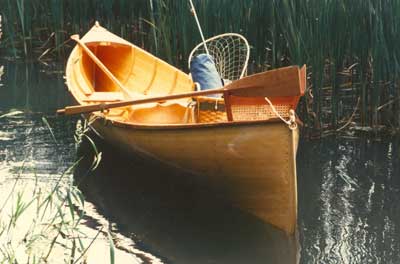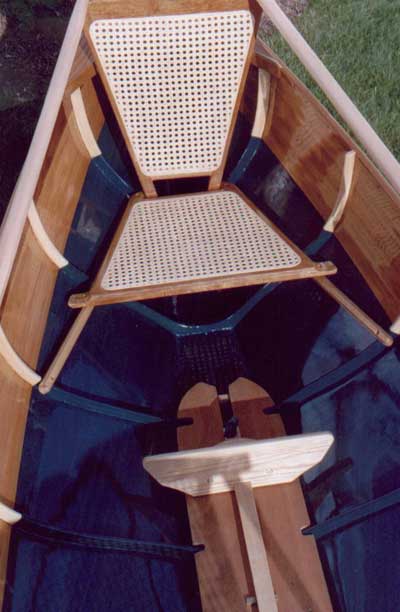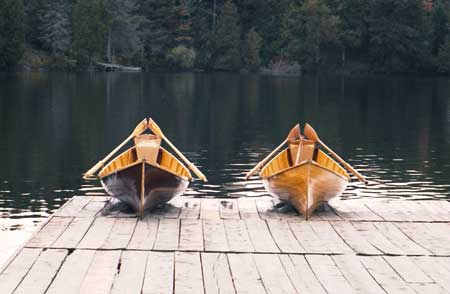
When Justin Martin was just out of high school, he described himself as pretty typically “looking for something to have fun and make some spare money.” In his case, that meant getting a job at Mad River Canoe – and finding himself immersed in a love of boat building.
Within six months, Justin had gained an understanding of the boat building process and found himself in leadership positions. He also brought his brother, Ian, into the work through a work-study program during Ian’s senior year of high school.
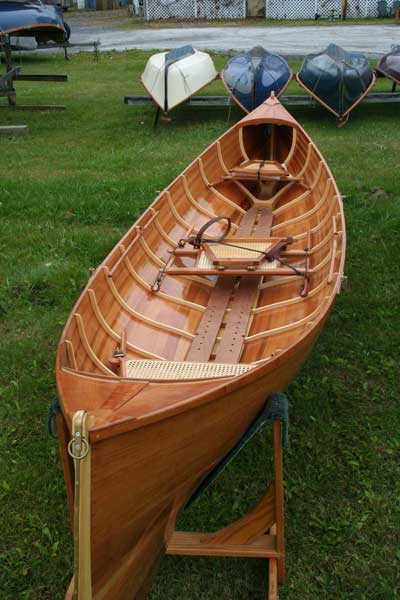
By the time Mad River Canoe moved to North Carolina in 2001, Justin and Ian found themselves committed to Vermont-based boat building, and began working for Adirondack Guideboat.
It was there that they built their first wooden boats. “They gave us a kit and they timed us,” Justin said. “We had to follow the manual and not get a lot of help. It took us 300 hours to build a 15-foot guideboat.”
Since then, he and Ian have probably built about 30 more wooden boats – and they’ve become owners of the company, purchasing it in 2012.
The majority of Adirondack Guideboat’s work is composite boats, rather than wooden, but even in those cases, there is wood involved, on the top of the boat, with pieces like the trim or the seats being made from cherry.
“The majority of our woodworking is making small parts to go on boats,” Justin said. They make things like a fishing rod holder, or motor mounts, and “we build our own oars. That’s pretty much another full-time job.”
Since coming to Adirondack Guideboat, the brothers have increased efficiency, Justin said. “We’re using better jigs and better tools. We’re now purchasing bigger and stronger stuff, that makes our jobs easier.”
Most recently, that was a resaw, which has replaced the use of a table for a lot of milling work. “We’ve saved a lot of material,” Justin said. “We’re doing the job safer and definitely more efficiently.”
They’ve also reduced the weight of one of their boat offerings. A 12-foot ultra-light solo packboat that used to weigh in at 49 pounds has now been reduced to 34 pounds. “Every material you use, you try and get both strength and also a light weight,” Justin said.
For the wooden boats that they build, that means Western red cedar, with the additions of cherry, spruce for the ribs and pine for the bottom board. “Cedar is really porous, which makes it lightweight,” Justin said, and, when the boat is finished, fiberglass is applied to the outside, then epoxy applied over that. “That helps strengthen the cedar as well,” he said.
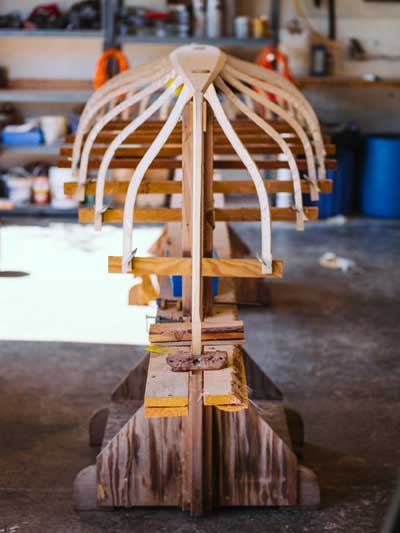
The Adirondack Guideboat wooden boats are strip-built, Justin said, with their ribs a particular source of pride. Whereas many boat builders will use a form cut out with a CNC router, Justin and Ian use a steambox to create a form for laminating the spruce ribs. “Our ribs are in the boat; that gives you the shape and the function,” he said.
While they can build the hull of a boat in a few days, “there’s a lot of tedious work sanding,” Justin said, “finishing out the build so it’s smooth, using a hand plane. “
But, he added, “Every time you build a boat, the final product makes it worth it. If you’re making something you love, it’s not just a job, it’s something you enjoy. We’ve always been boaters, and owning a boat business in Vermont that’s successful is a dream come true.”
